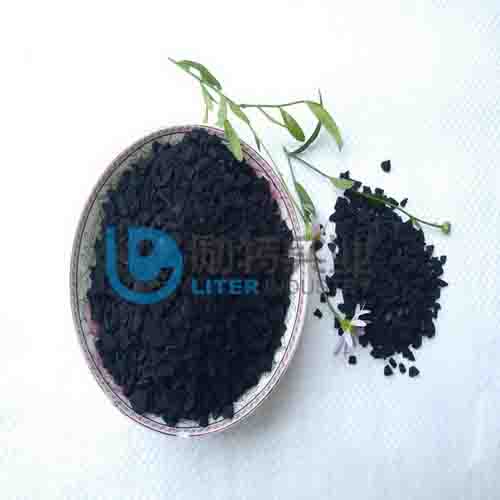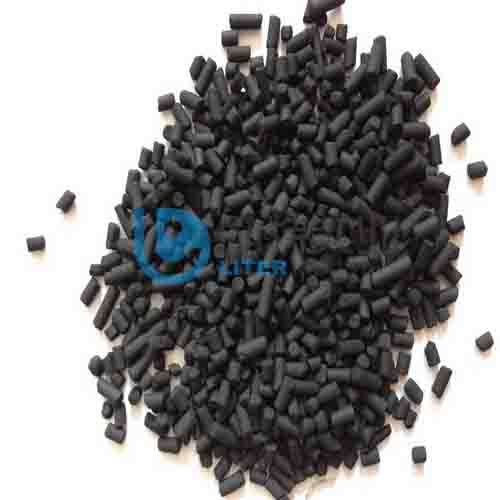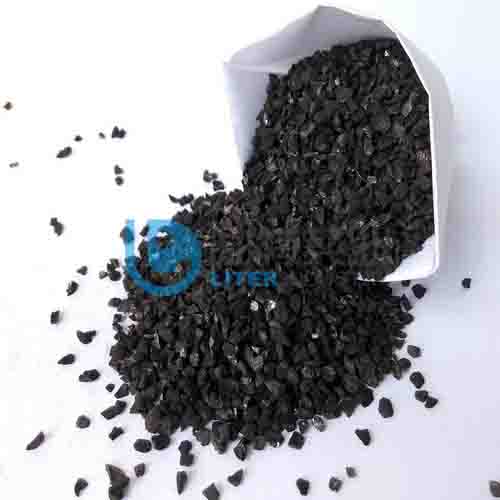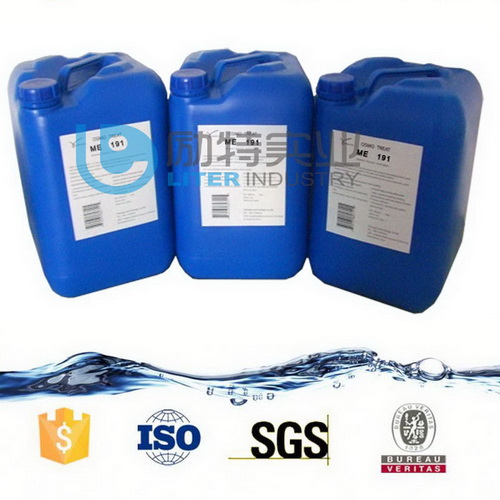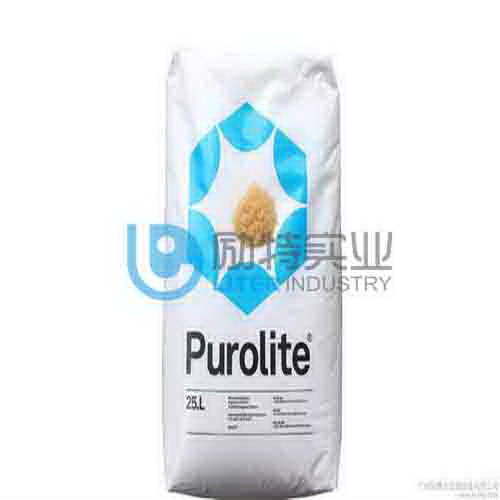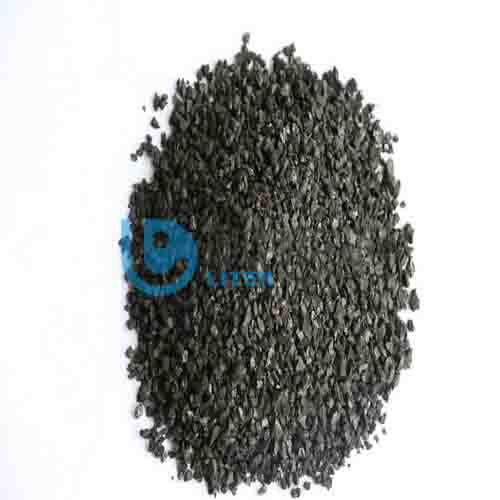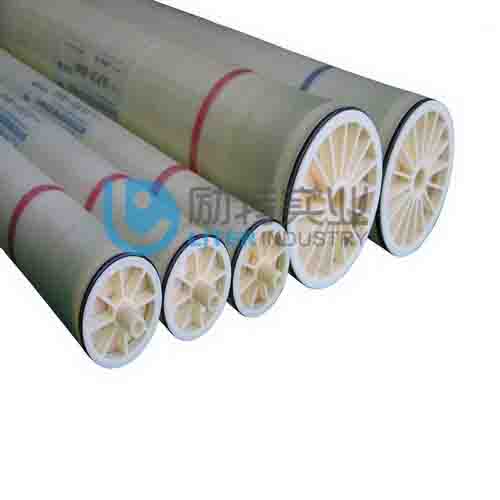- The product description
- The main function
- The basic parameters
Because activated carbon requires high pretreatment of water, and the price of activated carbon is expensive, in wastewater treatment, activated carbon is mainly used to remove trace pollutants in wastewater, which has achieved the purpose of deep purification.
(1) Activated carbon treatment of chromium-containing wastewater
Chromium is a large amount of metal raw material in electroplating. In wastewater, hexavalent chromium exists in different forms depending on the PH quality.
Activated carbon has a developed microporous structure and a high specific surface area, and has strong physical adsorption capacity. It can effectively adsorb Cr (VI) in wastewater. There are a large number of oxygen-containing groups on the surface of activated carbon such as hydroxyl (-OH), Carboxyl (-COOH), etc., they all have electrostatic adsorption function, which produces chemical adsorption after-sales service for Cr(VI). It can be used to treat electroplating wastewater to achieve discharge.
The test shows that: when the mass concentration of Cr(VI) in the solution is 50mg/L, PH=3, and the adsorption time is 1.5h, the adsorption performance of activated carbon and the detachment rate of Cr(VI) are far superior. Therefore, the activated carbon is used to treat chromium. The process of wastewater is the result of the comprehensive effects of activated carbon on Cr(VI) in solution, such as physical adsorption, chemical adsorption, and chemical reduction. Activated carbon treats chromium-containing wastewater with stable adsorption performance, high treatment efficiency, low operating cost, and certain social and economic benefits.
(2) Activated carbon treatment of cyanide-containing wastewater
In industrial production, wet extraction of gold and silver, chemical fiber production, coking, ammonia synthesis, electroplating, gas production and other industries all use cyanide or by-product cyanide, so a certain amount of cyanide must be discharged during the production process. Wastewater.
Activated carbon has a long history of being used to purify wastewater, and more and more literature reports have been applied to treat cyanide-containing wastewater. However, due to the small adsorption capacity of CN and HCN on activated carbon, generally 3mgCN/gAC~8mgCN/gAC Varieties vary), it is not economical in terms of processing costs.
(3) Activated carbon treatment of mercury-containing wastewater
Activated carbon has the performance of adsorbing mercury and mercury-containing compounds, but its adsorption capacity is limited, so it is only suitable for treating wastewater with low mercury content. If the concentration of mercury is high, it can be treated by chemical precipitation first, and the mercury content can be 1mg/L per month, and it can reach 2-3mg/L when it is high, and then use activated carbon for advanced treatment.
(4) Activated carbon treatment of phenolic wastewater
Phenol-containing wastewater is widely sourced from petrochemical plants, resin plants, coking plants and oil refineries. The diameter experiment proves that the adsorption performance of activated carbon for phenol is good, and the increase in temperature is not conducive to the adsorption, so that the adsorption capacity is reduced: but the time for increasing the temperature to reach the adsorption equilibrium is shortened. The amount of activated carbon and the adsorption time have excellent values. Under acidic and ZTE conditions, the removal rate does not change much; under strong alkaline conditions, the removal rate of phenol drops sharply. The stronger the alkalinity, the worse the adsorption.
(5) Activated carbon treatment of methanol-containing wastewater
Activated carbon can adsorb methanol, but the adsorption capacity is not strong, only to treat wastewater with low methanol content. The project operation results show that the COD of the mixed liquid can be reduced from 40mg/L to less than 12mg/L, and the methanol removal rate can reach 93.16%~, and the effluent water quality can meet the water quality requirements of the boiler desalinated water system.
Advanced treatment in oil refinery
The oil refinery contains wastewater, which is treated by oil separation, air flotation and biological treatment, and then advanced treatment by sand filtration and activated carbon filtration. The phenol content of wastewater decreased from 0.1 mg/L (after biological treatment) to 0.005 mg/L, cyanide decreased from 0.19 mg/L to 0.048 mg/L, and COD decreased from 85 mg/L to 18 mg/L.
Activated carbon is a specially treated carbon with numerous small pores and a huge surface area, with a surface area of 500-1500 square meters per gram of activated carbon. Activated carbon has strong physical adsorption and chemical adsorption functions, and it also has detoxification effects. The detoxification effect is to use its huge area to adsorb the poison in the micropores of the activated carbon, thereby preventing the absorption of the poison. At the same time, activated carbon can be combined with a variety of chemical substances to prevent the absorption of these substances. Classification of activated carbon There are many types of activated carbon used in production. Generally made into powder or granular. Powdered activated carbon has strong adsorption capacity, is easy to prepare and low in price, but it is difficult to regenerate and generally cannot be reused. The granular activated carbon is more expensive, but it can be reused after regeneration, and the working conditions during use are better, and the operation and management are convenient. Therefore, granular activated carbon is often used in water treatment. The adsorption of activated carbon refers to the use of the solid surface of activated carbon to adsorb one or more substances in water to achieve the purpose of purifying water.
The parameters of activated carbon include iodine value, ash content, and bulk weight. Activated carbon iodine value index technology analyzes the iodine adsorption value, which is an indicator of activated carbon. The iodine value is used to weigh the price of activated carbon. Activated carbon of the same material and specification can use the iodine value to weigh the quality and price of activated carbon. The following is to clarify the effect indicators of the various values of activated carbon on the adsorption capacity of activated carbon: Iodine value refers to the amount of iodine adsorbed by activated carbon in 0, 02n12/kl aqueous solution. The iodine value is associated with the outer surface area of pores with a diameter greater than 10a. The high iodine value of the activated carbon price is one of the criteria for discrimination. The butane value is the adsorption of butane per unit weight of activated carbon after saturated air and butane pass through the carbon bed at a special temperature and a specific pressure. There are two types of ash powder of activated carbon, one is external ash, and the other is internal ash. Generally speaking, the ash of activated carbon refers to internal ash. Moisture is the percentage of the weight of water absorbed in the activated carbon that measures the amount of water contained in the carbon. The hardness value refers to the resistance of the granular activated carbon to the decay movement of the steel ball in the ro-tap instrument. Hardness is a measure of the mechanical strength of activated carbon. Carbon tetrachloride The carbon tetrachloride value is an indicator of the total pore volume and is measured with a saturated cci4 gas stream at zero degrees Celsius passing through a 25-degree carbon bed. The molasses value is a measure of the relative decolorization ability of activated carbon in a boiling molasses solution. The molasses value is interpreted as an outer surface area with a pore diameter greater than 28a. Since molasses is a multi-component mixture, this parameter must be tested strictly in accordance with the instructions. The molasses value is obtained by treating the molasses liquid with the activated carbon standard sample and the activated carbon sample to be tested, and calculating the ratio of the optical density of the filter. Bulk weight is a measure of the quality of a specific amount of charcoal. After gradually adding activated carbon to a graduated drum to 100cc, and measuring its quality. This value is used to calculate the amount of activated carbon required to fill a specific adsorption installation. Simply put, the bulk weight is the weight per unit volume of activated carbon. The particle density is the weight of the particle carbon per unit volume, excluding the particles and the space between the cracks greater than 0, 1mm. 9. Methylene blue The methylene blue value refers to the number of milligrams of methylene blue absorbed when a solution of 1, 0 grams of charcoal and 1, 0 mg/liter of methylene blue reaches an equilibrium state. The abrasion value is an index to measure the abrasion resistance of activated carbon. The abrasion value of granular activated carbon clarifies that the particles reduce the resistance of the particles during disposal. Calculated by the ratio of the uniform diameter of the final particle to the uniform diameter of the original particle.










